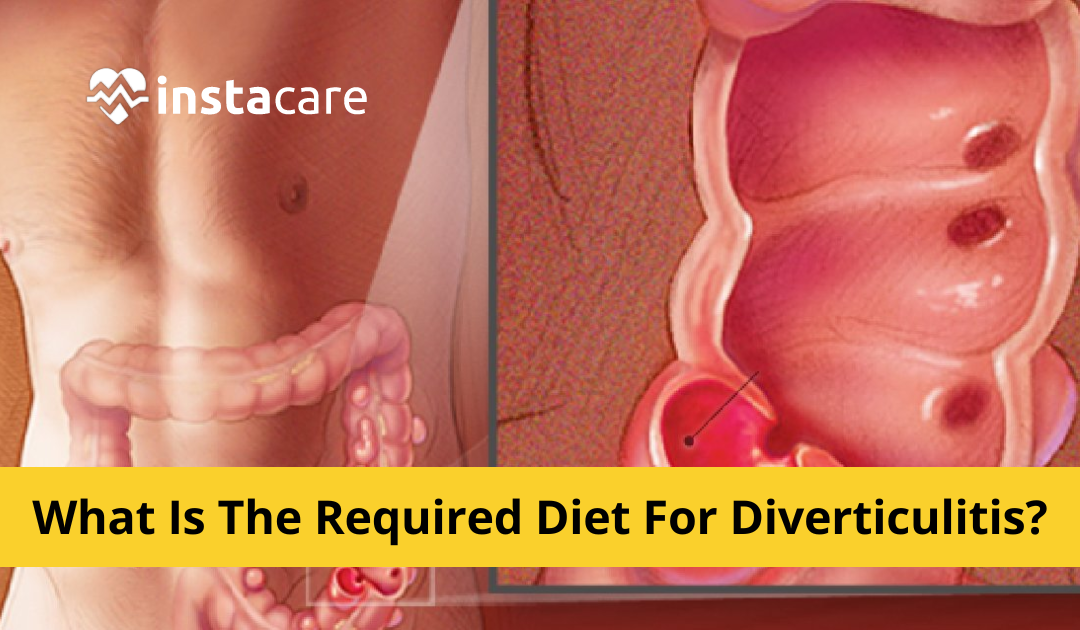Diverticulitis is a condition also characterized by inflamed or infected pouches (diverticula) that develop in the walls of the colon. It can also indeed cause symptoms such as abdominal pain, bloating, constipation, and changes in bowel habits. While the exact cause of diverticulitis is not fully understood, dietary factors play a significant role in its management. This guide will explore the recommended diet for diverticulitis, focusing on specific nutritional modifications, foods to include, and foods to avoid to promote healing and prevent flare-ups.
1- Clear Liquid Diet
During the acute phase of diverticulitis, a clear liquid diet is often recommended when symptoms are severe. This phase allows the bowel to rest and promotes healing. Clear liquid options include:
- Broth: Clear, low-fat vegetable or chicken broth provides
hydration and essential nutrients.
- Water: Staying well-hydrated is crucial. Drinking plain water
helps prevent dehydration.
- Herbal Tea: Non-caffeinated herbal teas, such as chamomile or
peppermint tea, can provide comfort and hydration.
- Fruit Juices: Clear, pulp-free juices like apple or white grape juice can be consumed in moderation.
2- Low-Fiber Diet
After the acute phase subsides, a low-fiber diet is typically followed to reduce strain on the digestive system. Low-fiber foods include:
- Refined Grains: White bread, white rice, refined pasta, and
low-fiber cereals can be included in moderation.
- Canned or Cooked Vegetables: Well-cooked vegetables without skins or
seeds, such as carrots or green beans, are easier to digest.
- Tender Meats: Lean proteins like skinless poultry, fish, and
tender cuts of beef or pork can be consumed in appropriate portions.
- Low-Fiber Fruits: Soft, ripe fruits without peels or seeds, such as bananas, melons, and canned fruits in juice, can be enjoyed.
3- Transition To High-Fiber Diet
Once the symptoms subside and the inflammation decreases, gradually transitioning to a high-fiber diet is important to maintain overall digestive health and prevent future flare-ups. High-fiber foods to include are:
- Whole Grains: Whole wheat bread, whole grain cereals, brown rice,
and whole wheat pasta provide a good source of dietary fiber.
- Fresh Fruits and Vegetables: Incorporate a variety of fruits and
vegetables, including leafy greens, berries, apples, and broccoli, into your
daily meals.
- Legumes and Nuts: Beans, lentils, chickpeas, and unsalted nuts are
also indeed excellent sources of fiber and protein.
- Healthy Fats: Include foods rich in healthy fats, also such as avocados, olive oil, and fatty fish like salmon, which provide anti-inflammatory benefits.
View More: 12 Amazing Sugarcane Juice Benefits
General Dietary Guidelines For Diverticulitis
In addition to specific food recommendations, the following general guidelines are beneficial for individuals with diverticulitis:
1- Adequate Hydration
Drink plenty of water throughout the day to maintain proper hydration and promote healthy bowel movements.
2- Portion Control
Practice portion control to avoid overeating, as large meals can strain the digestive system.
3- Regular Meal Times
Establish regular meal times to promote consistent bowel habits and support digestive regularity.
4- Gradual Introductions
When transitioning to a high-fiber diet, gradually introduce new foods to assess tolerance and prevent digestive discomfort.
5- Maintain a Healthy Weight
Maintain a healthy weight also through a balanced diet and regular exercise, as obesity increases the risk of diverticulitis complications.
Foods To Avoid
To prevent aggravation of diverticulitis symptoms and reduce the risk of complications, certain foods should be avoided:
1- High-Fiber Foods With Seeds
Foods with small seeds, such as strawberries, raspberries, tomatoes, and figs, can get trapped in the diverticula and irritate. It's best to avoid these foods during acute flare-ups.
2- Nuts And Seeds
Whole nuts, seeds, and popcorn can be difficult to digest and may increase the risk of diverticulitis complications. These should be avoided during acute phases and consumed in moderation once symptoms subside.
3- Tough Or Fibrous Meats
Tough cuts of meat, such as steak or pork with gristle, can be hard to digest and may cause discomfort. Opt for tender cuts of meat during flare-ups.
4- Spicy Foods
Spicy foods also may irritate the digestive system and exacerbate symptoms. Depending on individual tolerance, avoid or limit spicy foods, such as hot peppers or hot sauces.
Conclusion
The recommended diet for diverticulitis focuses on clear liquid options during acute phases, transitioning to a low-fiber diet, and gradually increasing fiber intake to a high-fiber diet as symptoms improve. Working with healthcare professionals, such as doctors and registered dietitians, is crucial in developing a personalized plan that meets individual needs and promotes optimal digestive health.

